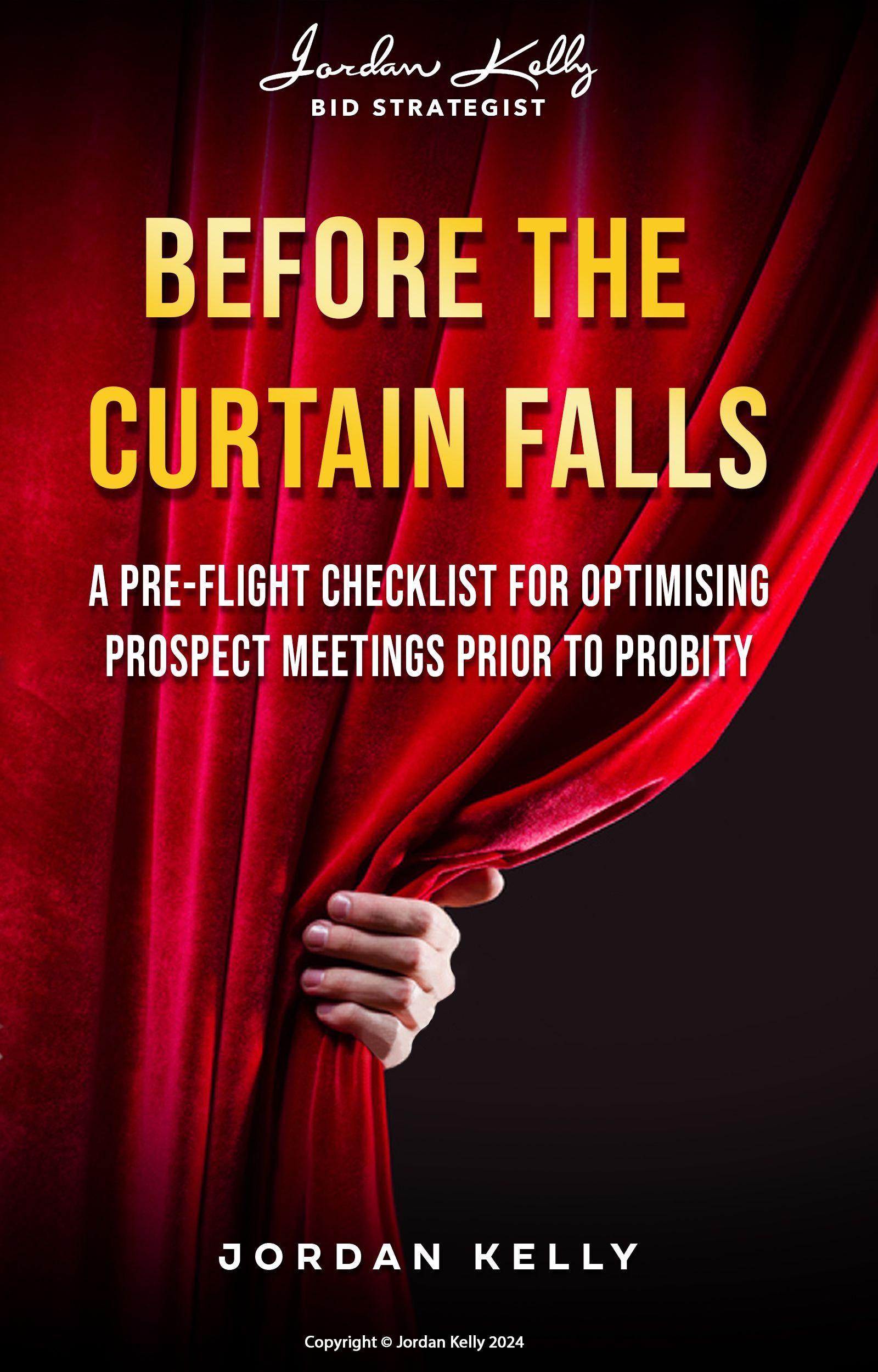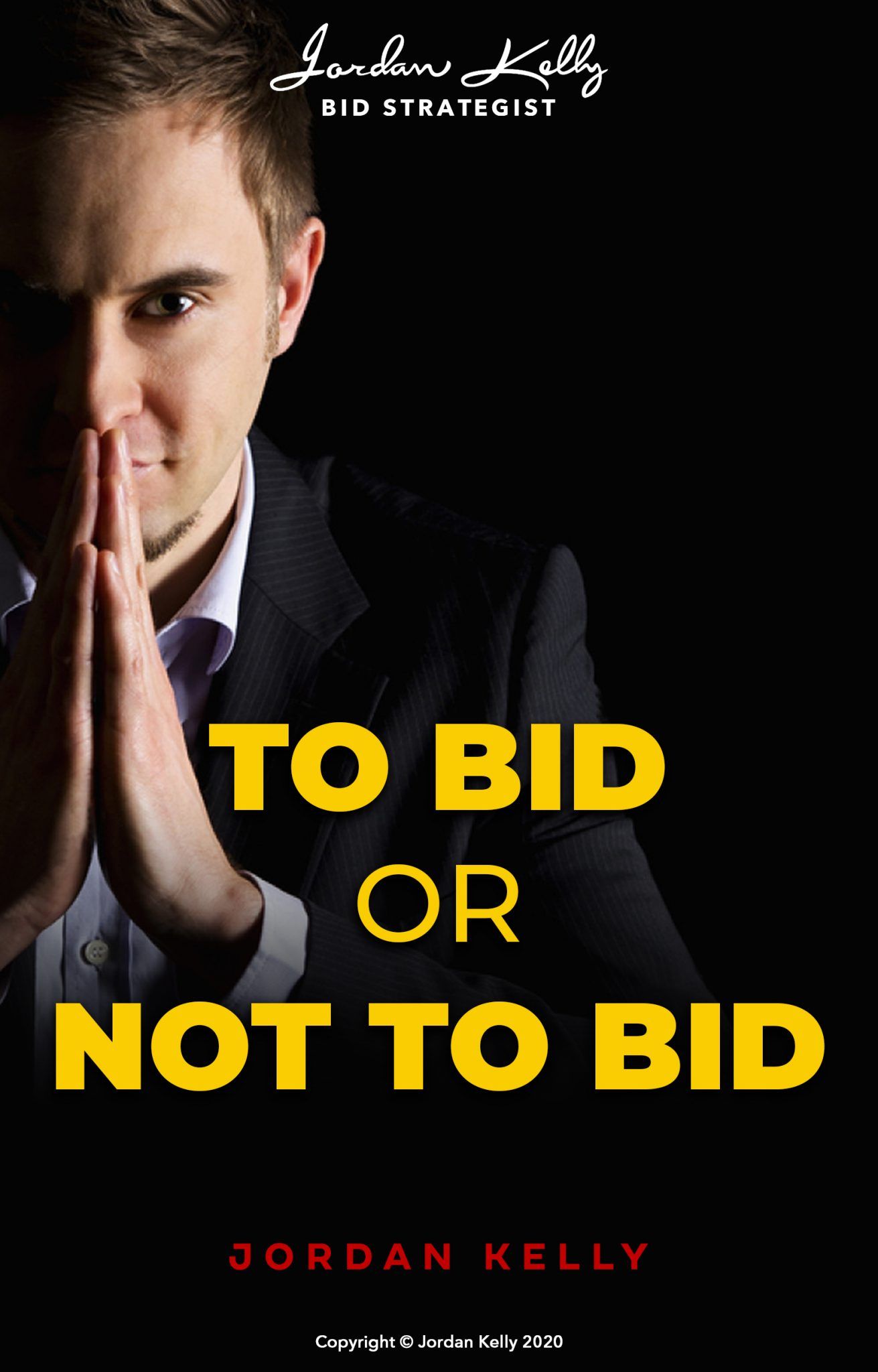CATEGORIES:

The best-quality submissions have one thing in common: research and other forms of preparation start early . . . long before the formal Expression of Interest or Request for Proposal is released into the marketplace.
Conversely, inadequate pre-probity preparation sets the scene for a submission characterised by rushed background research (if any), as well as the disorganisation that results from waiting until the client’s always-too-short deadline is upon the bidder.
The following is a set of recommendations for the research and preparation an intending bidder should conduct prior to the client’s release of the formal market call documentation.
I have developed, tested and consistently employed this series of pre-probity bid management steps over the course of the past dozen years. It’s been refined now to the point where it represents a logical, comprehensive, streamlined framework – and ensures a strategy-based, high quality end-submission.
Stage One:
Collation and sharing of the existing information resulting from all previous prospect/client meetings and communications.
Prior to the conduct of any bid strategy formulation sessions, all information gathered by business development personnel needs to be corralled, co-ordinated, verified and expanded upon.
Initial overview strategy session with management personnel responsible for selecting external partners and bid team members.
It’s critical to identify the most likely core elements of your intended approach (notwithstanding that this can, at this stage, be based only on pre-release research, communications and assumptions) before the selection of bid team participants and contributors, and before the selection of any joint venture partners, in order to ensure the assembled team is relevant to that strategy.
Stage Three:
Identify external partners and team management.
Logical follow-on from Stage Three.
Stage Four:
Strategy session/s to map out an interim/likely strategy.
The Pursuit Leader / Business Development operatives, Bid Strategist and Bid Manager should work closely together to identify the most strategic participants for this early and initial (pre-release) bid strategy development session (or series of sessions).
The invitee list should focus tightly on those with direct client and project/contract experience, and relevant competitor knowledge, in order to ensure those participating have a valuable and specific contribution to make to the strategy development process.
Stage Five:
Production of a formal Interim Bid Strategy Document.
This forms an early blueprint for the approach to the EOI/RFP response. It also documents a clear “to do list”, to ensure identified knowledge gaps are filled.
(It needs to be recognised that although this will be based on the best information available at the time, it will be subject to any degree of change both before and after the client’s market call documentation is released.)
Stage Six:
Follow-through of Interim Strategy Document recommendations.
The Pursuit Leader and his or her team, the Bid Strategist, and the Bid Manager must work closely together in the collection of additional information and actioning of items directed by the Interim Strategy document.
This stage should include the identification of any Subject Matter Experts (SMEs) whose input may be required into any sub-strategies (flagged by the Interim Strategy document) for development.
Stage Seven:
Team education.
The opportunity exists – while Stage Six is being conducted – to assess the broader team’s (a) project knowledge base, and (b) relevant writing competencies, and to address these issues prior to the bid production phase.
Stage Eight:
Second strategy session and production of "anticipated final" Strategy Document.
The purpose of the second series of strategy sessions is to bring together the further information requested by the Interim Strategy document, firm up sub-strategies, and work with this new/refined input to develop the anticipated final strategy.
(Clearly, if the directives of the Interim Strategy Document have not been actioned, the value of outputs from these second sessions will be negatively impacted.)
This document will then form the final bid strategy blueprint, subject to its testing against the content and requirements of the actual RFP, upon release.
Stage Nine:
Customising of case studies and Curricula Vitae.
The bid strategy blueprint in hand, an immediate start can now be made on the production of customised case studies / project data sheets, contract/project-specific CVs, along with any other supporting documentation likely to be required as part of the submission.
Stage Ten:
Testimonial-gathering, in accordance with Strategy Document intentions and directions.
Similarly to Stage Nine, high-value testimonials should be sought from the most relevant of the bidder’s clients/customers.
Stage 11:
Formulate brief for designers.
As a “heads up”, if the submission will be heavy in volume, a specifically-formulated written design brief – the essence of which is distilled from the Strategy Document – should be produced for design / production personnel. This should be supplemented by an oral presentation of the essential elements of the bid strategy.
Lengthy experience working directly with designers over many years has shown that the delivery of a clear, detailed and definitive design brief is essential to the design team’s development of a competent and strategic design concept proposal.
TO BID OR NOT TO BID
(Training Program)
The real value of a thorough and well thought-out bid/no bid decision analysis – whether highly structured or less so – results from asking the right questions (in a logically-progressing order) and seeking out well-researched answers.
It's a customised, deep-thinking process during which a valuable perspective of the client and the opportunity is built. When that is followed by a realistic self-analysis, the framework is in place for making a genuinely strategic, properly informed decision.

BEFORE THE CURTAIN FALLS
A Pre-Flight Checklist for Optimising Prospect Meetings Prior to Probity
(Training Program)
More often than not, the race is won before it starts.



